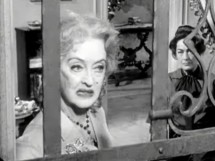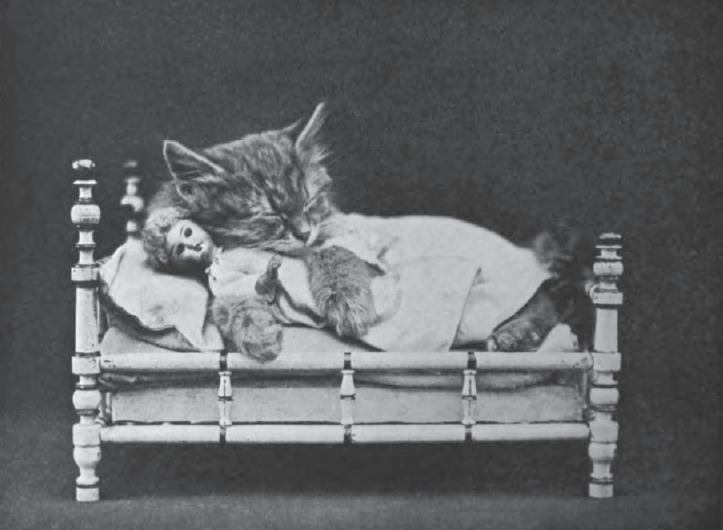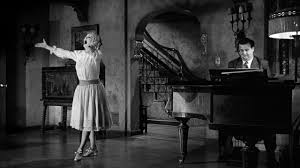Whatever Happened to Baby Jane? (Novel)

By Henry Farrell.
The critic Judith Crist said, “the guignol is about as grand as it gets”. Film buffs, was Crist talking about Henry Farrell’s short novel, “Whatever Happened to Baby Jane?” or the 1962 film which it inspired? Neither. She meant the film “Hush…Hush, Sweet Charlotte’ which Farrell co-wrote with Lukas Heller, the screenwriter for “Baby Jane”. But Baby Jane Hudson is more gothicly horrifying on a good day than Charlotte and her lot on a Halloween killing spree.
Blanche Hudson, a beautiful and feted film star of the 30s and 40s, has spent twenty dreary years in a wheelchair after suffering a spinal injury. Her sister Jane shares Blanche’s gloomy Beverley Hills mansion and cares for her – after a fashion. Jane was, before Blanche outshone her, a wildly popular child star on vaudeville and jealousy has rotted through her hinges. Blanche decides to sell the house. Jane decides that’s not going to happen. Blanche decides to call the doctor. Jane decides to take the other phone off the hook. Jane decides to revive her career and employs a deadbeat accompanist, Edwin Flagg. Blanche decides she’s in trouble and her desperation spirals like the stairs she can’t manage.
At the very end the story takes a twist, which, like all good twists, makes the reader or viewer rethink what they have understood all along.
And all this comes from Henry Farrell’s effect on Jane Winslow, who was then the very young daughter of friends of the Farrells’. Jane is quoted in the introduction by the literary agent, Mitch Douglas; “‘I was told by my mother and others that every time Henry came visiting, I would run screaming from the room.'” This melodramatic reaction reminded Henry of Baby Jane types of the vaudeville and silent movies, and set an idea in motion.

The film has incidents which the book does not. Events are rearranged. The hint of incest is stronger. The dark and corvine Joan Crawford isn’t much like the blonde and limpid Blanche of the book. None of this is a surprise. But the mood of the book is – be afraid, be surprised – darker than that of the film, at least at first, when Blanche’s fear of Jane is stronger and the shadowy corners are more alive than in the early part of the film.
Anyone who has seen the film will know that Blanche has reason to be wary of Jane’s cooking:-
“And then, almost exactly at the moment when the last faint traces of daylight faded from the room, Jane’s footsteps approached with sudden briskness through the lower hallway and across the living room to the stairs.
Blanche reached out quickly to the bedside lamp and switched it on, commanding herself at the same time to be calm and composed. She watched shudderingly as the circle of light dashed itself out into the room, reaching, it seemed, with soft fingers for the dark and the repugnant tray.
She could not guess what Jane’s attitude might be, what she might say or do. Taking up the book form her lap, she propped it firmly against the arm of her chair in an effort to keep it steady.
When Jane came into the room, Blanche kept her eyes rigidly lowered to the book. Even so, she felt the panic rise again within her, suddenly, sharply. In an effort to hold it back, she told herself that she must not let herself be hysterical. There was noting, really, to be frightened about. Nonetheless her hands tightened their hold upon the book, as if in an effort to brace her entire being against the assault of any word or gesture that might come from Jane’s direction.
Jane, meanwhile, showed no inclination at all toward communicativeness. Carrying a new tray – Blanche’s dinner tray this time – she crossed directly to the desk and put it down beside the one already there.
At the corner of Blanche’s eye there appeared two monstrous mounds of white horror in the shadows beyond the reach of the light. And then, taking up the dreadful lunch tray, Jane, still without a glance in Blanche’s direction, turned and made her way out of the room. Not until her footsteps has faded off down the stairs did Blanche let the book fall from her trembling hands back into her lap.”
Farrell’s prose is brisk and expressive. Lights, shadows, stairs all lurk. Each character’s psychological truth is demonstrated in clear and lucid terms. We know – or think we know – why they do what they do, fatally ridiculous though it may seem to us and utterly opaque as it is to those who suffer as a result. Blanche’s timid forbearance and inaction, Jane’s dangerous moods, Edwin Flagg’s not running away the moment he spots his new employer. These all make sense in the light of their backstories and memories.
“Jane’s face, as she sat there, seemed to hang haggardly upon itself like a tattered cloth. her eyes were dull, shielded from the light by the forward inclination of her head. She was lost. Lost and terribly frightened. In her fright, she turned back upon the bleak vista of the day, trying to discover by what wrong running she had arrived at this final moment of lonely desolation.
Once the way was known to her, perhaps she would be able to retrace the minutes like steps so that tomorrow she would arrive back at today’s bright beginning. The harder she stared, though, the more obscure the path became to her. It was a shadowed lane that she had travelled blindly.
She had been led, helplessly, by elements and forces beyond herself. None of it was her fault; it had been forced on her, relentlessly, cruelly. But forced or not, she saw in her fright that she must turn back, or even turn in a new direction; she must escape while escape was still possible. Blinking, she stared harder, harder…”
The book is certainly recommended, but we suggest that you see the film first, for its dramatic visuals, more intricate plot, melodramatic turns, for Bette Davis’ rendition of “I’ve Written a Letter to Daddy”, Victor Buono’s ghastly Edwin Flagg, and the scene on the beach.
[P adds: Yes indeedy, the Robert Aldrich film is an eerie, icky, squalid masterpiece, with a great twist. Bette Davis, Joan Crawford and Victor Buono are sensational.]Leave a comment...
While your email address is required to post a comment, it will NOT be published.
Leave a Reply Cancel
© Copyright 2014 The Varnished Culture All Rights Reserved. TVC Disclaimer. Site by KWD&D.




1 Comment